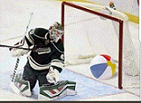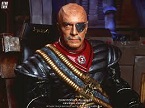SoMnFan
Posts: 94902
Status: offline

|
Olney with some very good stuff today ...
Optimism that a deal is going to get worked out hovers over the talks between Pablo Sandoval and the San Francisco Giants, to the degree that some potential bidders for the third baseman have started doing more background work on market alternatives.
Optimism doesn’t always translate into an actual deal, of course. If Sandoval’s side is stuck on a particular number, then the Giants could always move on to other options.
But rival officials are watching the Sandoval bidding and reading the tea leaves, and are increasingly having difficulty envisioning him signing elsewhere. “I think that’s a deal that happens early,” said one evaluator, predicting a reunion within the next 10 days.
Some of the circumstances in play:
1. The Giants like Sandoval, and Sandoval appears to like the Giants. This is not a situation in which acrimony increasingly festers, as it did with Robinson Cano and the New York Yankees last winter. Over time, Cano became offended by the team’s negotiating stance, and the divorce became somewhat ugly.
2. The Giants have a history of paying their free agents, and they pay them well. When the Oakland Athletics traded for Jon Lester, it was taken as a fait accompli that the left-hander was merely a temp for the A’s, who don’t have the money to pay high-end free agents. Conversely, the Giants have the money, they can count on sellouts for the foreseeable future, and perhaps more than any other team, they seem willing to pay players afterward for services rendered. They won the 2010 World Series and then stunned the industry by giving Aubrey Huff a two-year, $20 million deal. Pat Burrell, a hero of that 2010 championship run, got a $1 million deal that was perceived by rival officials as a golden parachute.
In 2012, Marco Scutaro batted .328 in the postseason, and when one rival official learned at the winter meetings that the Giants had signed Scutaro to a three-year, $20 million contract, he joked he was going to jump off his balcony. Last fall, the Giants signed Tim Lincecum -- beloved by the fans in San Francisco -- to a two-year, $35 million deal that drew heavy criticism.
The Giants have demonstrated that they don’t care what anybody else thinks; they do their business as they see fit, and as recent history shows, it works well for them.
They aren’t going to lowball Sandoval; the ceiling of their offer will be what they perceive to be generous. “That’s something [Sandoval’s agent] has to take into account,” said another agent. “The Giants take care of their own. If they make an offer, there is a chance it’s the best you’re going to see.”
3. Sandoval is unquestionably liked by other teams for being a switch-hitter and for his ability to square up a ball. But if a team is going to outbid the Giants for Sandoval, in the way that the Yankees blew away the Boston Red Sox and all other teams with a $153 million offer for Jacoby Ellsbury, they’re going to have to believe his production will grow during the regular season.
“His numbers don’t blow you away,” said one assistant GM.
In 2009, at age 22, Sandoval batted .330 with 189 hits and 74 for extra bases. In the five seasons since then, his best average in any season was .315, and his high in homers was 23. In 2014, he batted .279 with a .324 on-base percentage and 45 extra-base hits in 638 plate appearances.
The context for his production last season has changed, of course; offensive numbers in general are down dramatically, and when compared to the current crop of free agents, Sandoval looks really good. Does he look good enough that some team is ready to crush the Giants in the bidding?
We’ll see. Some teams are already identifying Plan B's, given their own reluctance to bid heavily on Sandoval, and given the Giants’ track record of negotiations.
The Giants are smart to prioritize Sandoval, writes Marcus Thompson.
Around the league
• The Chicago Cubs are flush with dollars and prospects, and rival evaluators believe that they will be the biggest player at the table for the wealth of high-end pitching that will be available during the next 13 months.
But that doesn’t necessarily mean that they intend to immediately throw a stack of chips at the best pitchers, such as Max Scherzer or Lester, who are available right now. Rather, it’s very possible they will use their position of power and wait for the market to come to them, to use their resources efficiently. They don’t have to chase one particular pitcher in the bidding, given what’s going to be available in the days ahead. New cubs manager Joe Maddon is talking about contending next year -- because, as he says, that’s what he’ll always do -- but the Cubs’ front office can take a longer view.
Let’s say another team goes in heavy on Scherzer and gives him a top-of-the-market deal for $150 million. The Cubs pass on the most expensive piece, and wait to see if there’s a better price on Lester -- and if not, then eventually somebody is going to drop into their price range over the next 13 months, whether it’s Johnny Cueto or David Price or Jordan Zimmermann. If they don’t sign Scherzer or Lester this winter, they can still pluck the best of the second tier, at a much lower cost.
Francisco Liriano could be a candidate if he rejects the Pirates’ qualifying offer of $15.3 million. Some teams will shy away from Liriano, because they don’t want to give up the draft pick. Liriano has told friends he’d love to sign where Russell Martin lands so he can continue working with him. (And no wonder: Liriano has thrived when teaming with Martin in his starts the past two seasons, with a striking difference in his numbers. In 33 starts in which he and Martin worked together in 2013-2014, Liriano had a 2.92 ERA with 204 strikeouts and 81 walks in 200 2/3 innings. In 22 starts with other catchers, he had a 3.67 ERA with 134 strikeouts and 63 walks in 122 2/3 innings.)
Might the Cubs look to sign both Russell Martin and Francisco Liriano this winter?If the Cubs win the bidding for Martin, they would surrender their second-round pick as compensation; signing Liriano would cost them only a third-round pick, and significantly fewer dollars than Lester or Scherzer (perhaps something in the range of $42 million over three years or $52 million over four years).
Or maybe the Cubs will wait to sign Jason Hammel or Brandon McCarthy on a short-term deal, or maybe the Phillies’ asking price on Cole Hamels will eventually drop.
The Cubs are being aggressive on Martin because he is the centerpiece of a seller’s market in catching -- he is the only high-end player available at his position.
But unless they love Lester -- or Scherzer -- far and away better than anybody else there really is no reason for them to be hyper-aggressive in the starting pitching market, which will inevitably regress to the point that excellent options are available to them at less than top dollar.
Maddon is crazy, but in a good way, writes Gordon Wittenmyer.
• Rival executives believe that Dodgers president Andrew Friedman will talk with other teams about possible return for Yasiel Puig -- but nobody should consider this headline news, yet. Friedman will routinely test the market on just about all of his players, said one NL evaluator, “because that’s what Andrew does.”
In other words, any initial discussion of Puig would be akin to running computer simulations -- just part of the process.
But it’ll be interesting to see whether Puig trade talks ever advance, because there are certainly folks within the organization who prefer that he play elsewhere, given the inconsistency in his work.
Information is king, Friedman tells Dylan Hernandez.
• Speaking of surplus pitching: Jeff Samardzija is on the radar of the White Sox, writes Bruce Levine.
• Mickey Lolich doesn't believe Madison Bumgarner's World Series measured up to his 1968 World Series.
Lolich was incredible in that World Series. He also had a different strike zone, a culture in which hitters were much more aggressive, so a complete game required less work, and the postseason consisted of just the World Series. Apples and oranges.
• A Red Sox reunion with Lester remains possible, writes Peter Abraham.
Boston may look for a third baseman this winter.
• The Royals and other teams have a lot of questions to answer as the GM meetings start Monday.
Moves, deals and decisions
1. The Pirates claimed a utility player.
2. Andrew Bailey signed a minor league deal with the Yankees the other day, and if he reaches the big leagues, he’ll make a base salary of $1 million, plus incentives that are essentially tied to his health and how much he can pitch.
3. The Yankees agreed to terms with Chris Young. He will go into spring training as their fourth outfielder, behind Ellsbury, Brett Gardner and Carlos Beltran, but should get a lot of playing time against left-handers.
4. Dave Martinez is the obvious choice to be the Rays’ next manager, but Roger Mooney wonders whether he’s too obvious.
5. Ichiro Suzuki wants to continue playing. He is 156 hits shy of 3,000 for his MLB career.
AL East
• Adam Jones says his charitable work is just beginning.
AL Central
• Jose Abreu took a mysterious journey.
• Paul Hoynes addresses the question of whether the Indians should trade Francisco Lindor.
The only thing that needs to happen is that expectations need to be tamped down. As coverage of prospects has increased in recent years, fueled by Twitter, these guys arrive in the big leagues with tons of advance notice. We’ve been hearing about Lindor for years.
But not all prospects are created equal. Not all prospects are Mike Trout or Bryce Harper. I remember talking with a Rangers staffer about Jurickson Profar -- who had the misfortune of being regarded as the game’s top prospect after the Trout-Harper-Manny Machado wave -- and he spoke hopefully about how Profar could turn out to be a decent big leaguer, somebody who had a chance to help.
“But he’s not close to those [other] guys,” the staffer said. “It’s not even the same conversation.”
I’ve never seen Lindor play, but what I hear is along the same lines as Profar: He could turn out to be a good major leaguer, but he’s not an impact guy like Trout or Harper, who are the exceptions.
AL West
• Mark Appel believes he can contribute to the Astros next season. From Eric Smith’s story:
An Arizona Fall League media relations member approaches Appel and inquires whether the No. 1 overall pick of the 2013 draft is available for an interview. The Astros’ top pitching prospect agrees, but with one caveat: No questions about Lancaster.
Ah yes, Lancaster. A vast desert surrounding that haunted Appel in 2014, the site of his disastrous 9.74 ERA over 12 starts.
True to the stipulation, Appel’s response when prodded about Lancaster is succinct.
“There’s probably too many things I learned,” Appel said with a chuckle as he rubbed his scruffy beard. “I’ll pass for now, but I’m sure I’ll be able to share everything I learned sometime later in my life.”
Later, however, and without prompting, Appel reveals he is writing a journal about his time with the JetHawks of the high Class A California League.
“It was recommended to me by a good friend and someone that I look up to -- they don’t play baseball or anything -- that I remember everything that happened and write it down,” Appel said.
A few words of advice for Appel: He’s going to be asked about his 2014 struggles by other reporters, and he’s a really smart person who can figure out a way to deal with those questions without saying he won’t talk about them -- a response that comes off as something of a red flag.
Every ballplayer fails or slumps at one time or another. Everybody. Ask Dennis Eckersley, or George Brett, or Willie Mays, or any other Hall of Famer or marginal player -- they have all struggled at one time or another. Mariano Rivera is arguably the greatest postseason player ever, and parts of his legacy include Luis Gonzalez's broken-bat hit to end the 2001 World Series and Dave Roberts' stolen base and game-tying run in 2004.
Failure is inherent in baseball; the whole sport is built on failure, which is part of what makes it so fascinating. No media relations person can protect any player from that. It might be better for Appel to embrace his failure when he speaks with reporters, own it, and build on it.
• Michael Young thinks Jeff Banister is buried treasure.
NL East
• John Coppolella continues to move up through the ranks in the Atlanta front office, Mark Bowman writes.
NL Central
• Peter Bourjos expects better results next year.
• Bernie Miklasz wonders: Is Nelson Cruz a fit for the Cardinals?
Answer: Only if they’re ready to field Matt Holliday and Cruz as corner outfielders, and carry two players with whopper contracts past their mid-30s.
• The road to an improved Cincinnati offense starts in Arizona, writes John Fay.
NL West
• Chip Hale is fired up for spring training, writes Nick Piecoro.
• The Rockies should trade Troy Tulowitzki and Carlos Gonzalez -- but only when they’re healthy, writes Benjamin Hochman.
Lastly
• Alex Rodriguez's world imploded in the PED scandal, writes Jay Weaver, reporting on wiretap transcripts.
The Yankees must put up a fight to keep Rodriguez from wearing their uniform again, writes Mike Lupica.
The wife of A-Rod’s cousin is firing words at Rodriguez through the Daily News.
Given Yuri Sucart’s proximity to the Yankees in those years, there are probably other players wondering: What does he know?
• Bruce Jenkins wonders whether the Dodgers’ front-office talent grab will translate on the field.
• In light of Utah’s premature touchdown celebration Saturday, here’s the greatest bat-flip without the payoff: Talk about shame in walking to pick up the bat.
Here’s another great bat flip.
And today will be better than yesterday.
_____________________________
Work like a Captain.
Play like a Pirate.
|

 Printable Version
Printable Version













 New Messages
New Messages No New Messages
No New Messages Hot Topic w/ New Messages
Hot Topic w/ New Messages Hot Topic w/o New Messages
Hot Topic w/o New Messages Locked w/ New Messages
Locked w/ New Messages Locked w/o New Messages
Locked w/o New Messages Post New Thread
Post New Thread